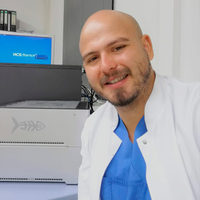Biotechnology & medicine
Lingjie Kong
Breakthroughs in neuroimaging allow real-time observation of neural network activity across brain regions in conscious animals

Latin America
Luis Azmitia
He fights off brain tumors by sequencing them in a matter of hours from the operating table to accelerate the diagnosis

MENA
Sadeem Al Marri
Created a 3D printed robotic hand that translates Arabic texts.

Global
James Dahlman
His method makes it possible to test 300 drugs at once.

China
Yinqing Li
Enabling comprehensive profiling of single neurons which provides important information for potential drug targets
